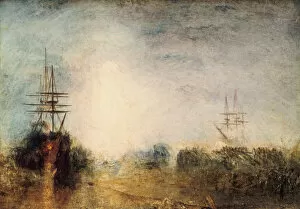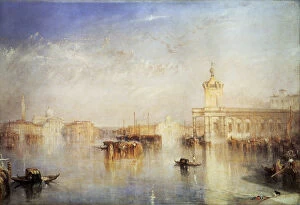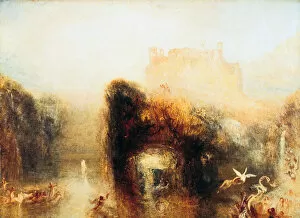Joseph Mallord William Collection (page 6)
Joseph Mallord William Turner, known as JMW Turner, was a renowned British artist who left an indelible mark on the art world
All Professionally Made to Order for Quick Shipping
Joseph Mallord William Turner, known as JMW Turner, was a renowned British artist who left an indelible mark on the art world. His works are characterized by their stunning use of light and color, capturing the essence of nature and human emotions. One of his most famous paintings is "The Fighting Temeraire, " created in 1839. This masterpiece depicts the majestic ship being towed to its final berth to be broken up. The contrast between the fading glory of the warship and the vibrant sunset symbolizes both progress and nostalgia. In "Whitby" from 1824, Turner portrays a picturesque coastal town with its iconic abbey ruins perched on cliffs overlooking the sea. The play of light on water creates a sense of tranquility that permeates this breathtaking scene. Turner's self-portrait from 1799 reveals his introspective side as he gazes directly at us with piercing eyes. It captures not only his physical appearance but also hints at his artistic genius and passion for capturing fleeting moments in time. "Launceston" from 1909 showcases Turner's ability to capture architectural beauty through delicate brushstrokes. The ancient castle stands tall against a dramatic sky, evoking a sense of history and grandeur. "A First Rate Taking in Stores, " painted in 1818, depicts a massive warship being resupplied while docked at port. Through skillful use of light and shadow, Turner brings life to this bustling maritime scene filled with sailors going about their duties. "The Angel Standing in the Sun, " completed in 1846, demonstrates Turner's fascination with biblical themes. This ethereal painting portrays an angelic figure bathed in celestial light amidst swirling clouds—a testament to his mastery over atmospheric effects. In "Ulysses Deriding Polyphemus" from 1829 (1904), we witness another mythological subject brought to life by Turner's imagination.










